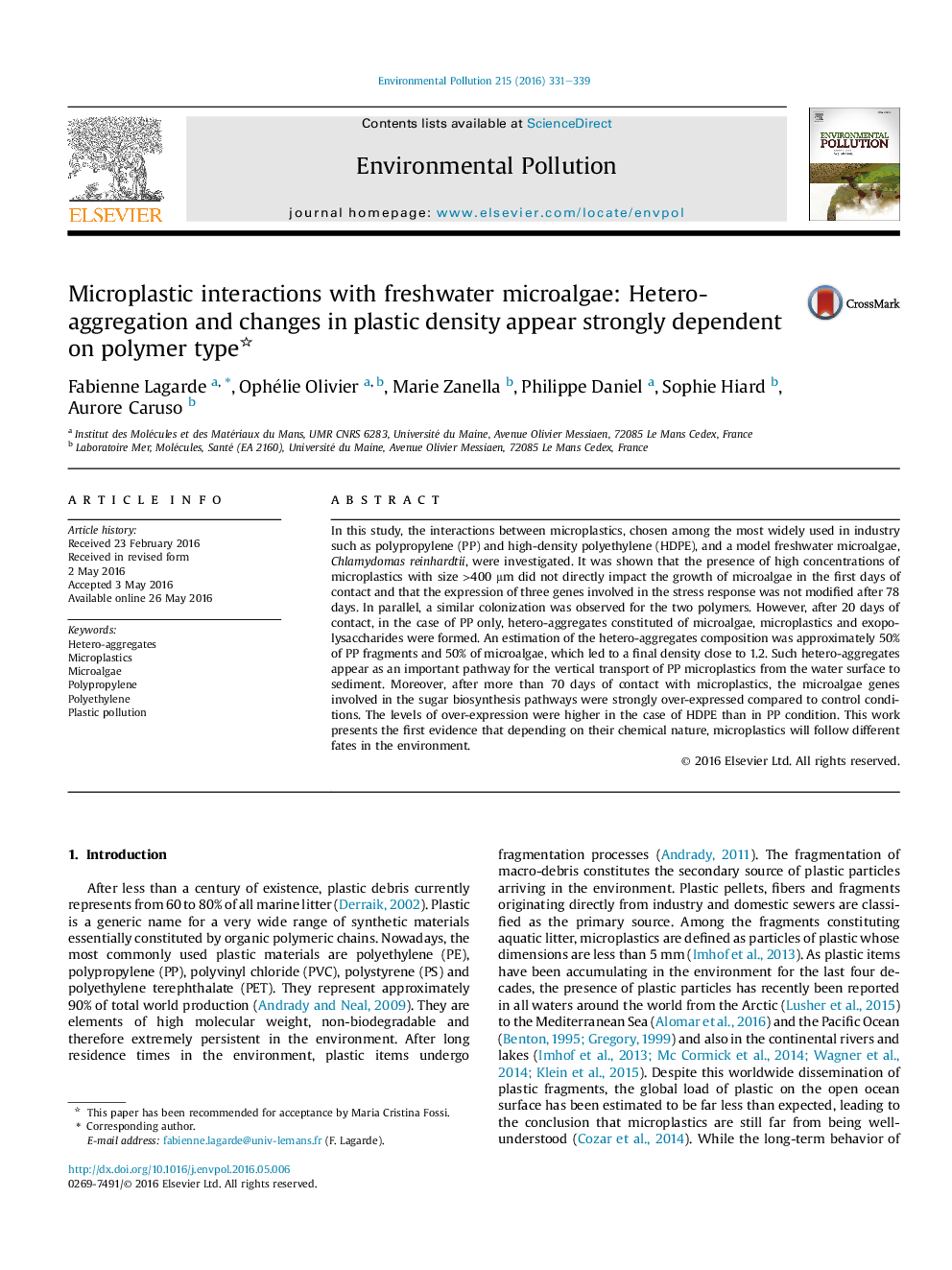| کد مقاله | کد نشریه | سال انتشار | مقاله انگلیسی | نسخه تمام متن |
|---|---|---|---|---|
| 6316110 | 1619158 | 2016 | 9 صفحه PDF | دانلود رایگان |
- The presence of microplastics in high concentration did not directly impact microalgae growth.
- Gene transcripts involved in sugar biosynthesis were differently over-expressed depending on the polymer nature.
- Hetero-aggregates were formed only in the case of polypropylene fragments.
In this study, the interactions between microplastics, chosen among the most widely used in industry such as polypropylene (PP) and high-density polyethylene (HDPE), and a model freshwater microalgae, Chlamydomas reinhardtii, were investigated. It was shown that the presence of high concentrations of microplastics with size >400 μm did not directly impact the growth of microalgae in the first days of contact and that the expression of three genes involved in the stress response was not modified after 78 days. In parallel, a similar colonization was observed for the two polymers. However, after 20 days of contact, in the case of PP only, hetero-aggregates constituted of microalgae, microplastics and exopolysaccharides were formed. An estimation of the hetero-aggregates composition was approximately 50% of PP fragments and 50% of microalgae, which led to a final density close to 1.2. Such hetero-aggregates appear as an important pathway for the vertical transport of PP microplastics from the water surface to sediment. Moreover, after more than 70 days of contact with microplastics, the microalgae genes involved in the sugar biosynthesis pathways were strongly over-expressed compared to control conditions. The levels of over-expression were higher in the case of HDPE than in PP condition. This work presents the first evidence that depending on their chemical nature, microplastics will follow different fates in the environment.
Journal: Environmental Pollution - Volume 215, August 2016, Pages 331-339
